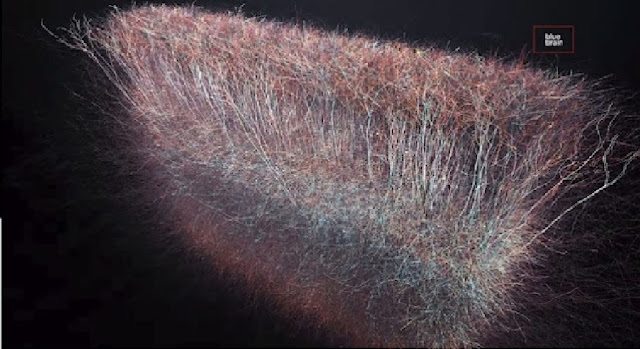Bernard Siegel
“Algebra, much less “algebraic topology”, was never my strong suit. However, reading this fascinating article definitely stimulated the 11 dimensions in my aging lawyer’s brain! According to a study published in “Frontiers in Computational Neuroscience”, the #Humanbrain can deal and create in up to 11 dimensions. The research might solve the #neuroscience mystery: where does the brain ‘store’ memories. Mathematicians from #EPFL and #AberdeenUniversity describe #Algebraictopology being like a telescope and microscope. It can zoom into networks to find hidden structures – the trees in the forest – and see the empty spaces – the clearings – all at the same time. Now, imagine this: “The appearance of high-dimensional cavities when the brain is processing information means that the #neurons in the network react to stimuli in an extremely organized manner. It is as if the brain reacts to a stimulus by building then razing a tower of multi-dimensional blocks, starting with rods (1D), then planks (2D), then cubes (3D), and then more complex geometries with 4D, 5D, etc. The progression of activity through the brain resembles a multi-dimensional sandcastle that materializes out of the sand and then disintegrates.”
According to the Blue Brain Project, the dimensions are not interpreted in the traditional sense of a dimension, which most of us understand. Scientists found exciting new facts about the intricacy of the human brain as part of the Blue Brain Project.
Neuroscientist Henry Markram, director of Blue Brain Project and professor at the EPFL in Lausanne, Switzerland, said: “We found a world that we had never imagined. There are tens of millions of these objects, even in a speck of the brain, up through seven dimensions. In some networks, we even found structures with up to eleven dimensions.”
Traditional mathematical viewpoints were found to be inapplicable and unproductive once researchers studied the human brain.The graphic tries to depict something that can’t be seen – a multi-dimensional cosmos of structures and places. A computerised replica of a section of the neocortex, the brain’s most evolved portion, may be found on the left. On the right, several forms of various sizes and geometries are used to illustrate construction.

